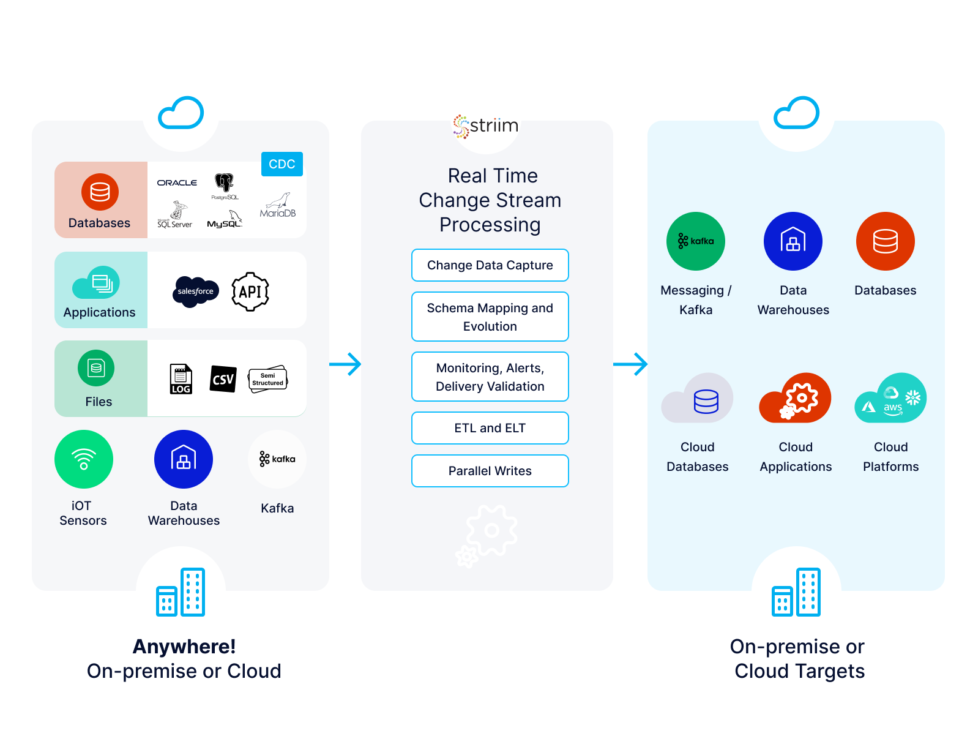
Over 80% of digital transformation (DT) initiatives fail because of unreliable data integration methods and siloed data. This figure comes as no surprise because companies find it challenging to handle ever-larger volumes, sources, and types of data. As these businesses struggle to bring data to a unified environment, they’re unable to gain critical insights and make informed decisions.
Legacy data integration solutions share part of the blame. They’re poorly equipped to integrate data in a flexible and scalable way. Companies are left with no choice but to modernize their data integration processes to take advantage of data sets and drive digital transformation.
To help you navigate modernization efforts, we’ve developed a guide. Including conversations with our CTO, Steve Wilkes, the guide dives into key considerations and issues you should prioritize when taking your data integration processes to the next level.
1. Develop a data integration modernization roadmap
Creating a high-level roadmap is the first step in data integration modernization efforts. Ideally, your roadmap should follow a three-step approach.
First, assess existing integrations. Your teams should collect details about integration patterns (REST API, event-driven, P2P, etc.) as well as source and target apps. Knowing the integration architecture and security needs is vital, too.
With the initial analysis completed, define the desired integration architecture and how to deploy it. If needed, consider and plan for any enterprise-specific requirements at this stage. It’s also recommended you identify an integration platform that’s aligned with your desired data architecture.
The final step is to create a plan for executing your modernization ideas. But before launching large-scale modernization, test your plan on a smaller project. Deploying a few integrations will help you identify risks that, left unresolved, could delay your modernization program.
Steve Wilkes, our CTO, recommends starting with initiatives that provide the fastest ROI as proof points. He says “one path for initial modernizations efforts we have seen over and over again with our customers that can rapidly provide results is to migrate some key databases and the applications that use them to the cloud.”
With the roadmap ready and adjusted to your specific needs, you can move forward and focus on crucial modernization tasks.
2. Add real-time data ingestion techniques
Introduce a broader range of modern data ingestion techniques, including real-time, and avoid outdated “batch” ETL techniques that cause latency and poor performance.
Steve, says that “for modern applications, real-time user experience is the new standard. Users expect data to be fresh, and for their reports to show accurate up-to-the-second information.”
Advanced data integration platforms allow you to capture and ingest data faster. Instead of hours- or days-long waiting, data enters staging areas, file systems, and other targets in near real-time.
You can then more effectively gather and analyze data from on-premise or cloud databases, sensors, robots, vehicles, and other sources. Advanced data ingestion techniques also enable companies to rapidly react to changing operational and business circumstances.
Manufacturing robots, for instance, can inform operators of bad parts instantaneously instead of the problems becoming apparent only when production halts. Or customer data from contact centers can be written to a customer relationship management (CRM) tool in real-time. Support agents and sales teams would then have access to up-to-date information all the time.
3. Support self-service access
Ensure that data integration enhances self-service access and, by extension, allows a broader group of analysts to run data analysis and visualization queries. Self-service can take other forms, including data prep and report creation. With users doing many tasks independently, IT teams have more time to tackle complex tasks.
Modern data integration solutions support self-service access in different ways. Integration tech, for instance, can feed raw data into databases and file systems and enable users to conduct data exploration and analytics. Also, integration platforms make it easy to visualize data in a user-friendly way.
Steve says that “data integration used to be a proprietary skill that only few had adequate knowledge to execute. With modern data integration tools like Striim, all analysts have single-click access to powerful data integration capabilities.”
4. Take advantage of new data platform types
Leverage new data platform types, such as Google, Azure, and Snowflake. The change data capture (CDC) feature plays an essential role in these efforts. Change data capture allows you to continuously migrate data from on-premise and cloud-based data warehouses to new platforms.
Modern data integration solutions also provide in-flight data processing. Data is delivered in a format suitable for advanced analytics. Advanced data integration architecture allows you to integrate data from Oracle, PostgreSQL, AWS RDS, and other data warehouses or databases to Google Cloud. Or you can continuously move data from various sources to different Azure Analysis Services or Cosmos DB. Whatever your preference is, integration technologies play an important role. You can establish, run, and enrich real-time data streams to new data platform types and execute your digital transformation strategy.
“New platforms help companies innovate faster with low-code/no-code applications fully managed in the cloud,” says Steve. “Traditionally companies would have to set aside or purchase new hardware in their data centers, install thick software clients, and build software in languages like C, Java, and shell scripts. The new cloud based paradigms have truly shifted the build-vs-buy question firmly into the buy category – where buy is more of a monthly lease that a costly one time purchase.”
5. Get value from various types of data
Working with cutting-edge data integration platforms allows you to capture and get business and analytics value from multi-structured, unstructured, and non-traditional data. These platforms transform data into a consumable format that you can work with. You can also combine information you already collect in a CRM tool with external data generated from social media, sensors, emails, events, and audiovisual sources. The fact that each of these sources has its own format is no longer an obstacle to handling data.
According to Steve, “the ability to not only source a large variety of data in real-time, but to process, combine, and enrich it while it is moving enables organizations to understand information contextually and make the correct decisions, faster.”
Businesses can then gain more accurate insights. For instance, instead of merely relying on its sales data, a company can run a sentiment analysis of social media to gauge how people are responding to new products. If a negative tone appears to be dominant, the company can analyze this problem further.
6. Partner with a versatile data integration vendor
Choose a data integration vendor that supports on-premises and cloud deployment and different types of integration (real-time, batch). This vendor will provide you with much-needed flexibility. As your data requirements evolve, data may have to be stored and moved across a number of private clouds, public clouds, on-premise databases, and other environments. Modern data architecture should support integration across all of these points.
Steve says that “your data integration vendor should be a partner for the long-term. This means they need to understand and support modern approaches to integration, including how the platform is accessed and which endpoints are supported. While there is really no such thing as future proof, your vendor should definitely not be living in the past.”
Versatile data integration vendors should also offer in-flight data processing capabilities, such as denormalization, enrichment, filtering, and masking. These data transformation processes minimize the ETL workload. Also, they reduce the architecture complexity, enable full resiliency, and improve compliance with data privacy regulations.
Integration tech helps you maintain a competitive edge
Modernizing data integration processes enables you to harness the power of digital transformation. Having different types, volumes, and sources of data is no longer a challenge. Modern integration platforms bring data to a unified environment and allow your team to gain critical insights.
Organizations are advised to focus on key modernization tasks, such as adding new ingestion techniques, exploring new platform types, and supporting self-service access. And as data fuels growth in today’s economy, improving your integration tech goes a long way toward maintaining a competitive edge.
Summing this up, Steve says “your journey to modernization needs a sound roadmap, but you also need a way of getting there. A real-time data integration platform like Striim is the engine that drives digital transformation.”






















